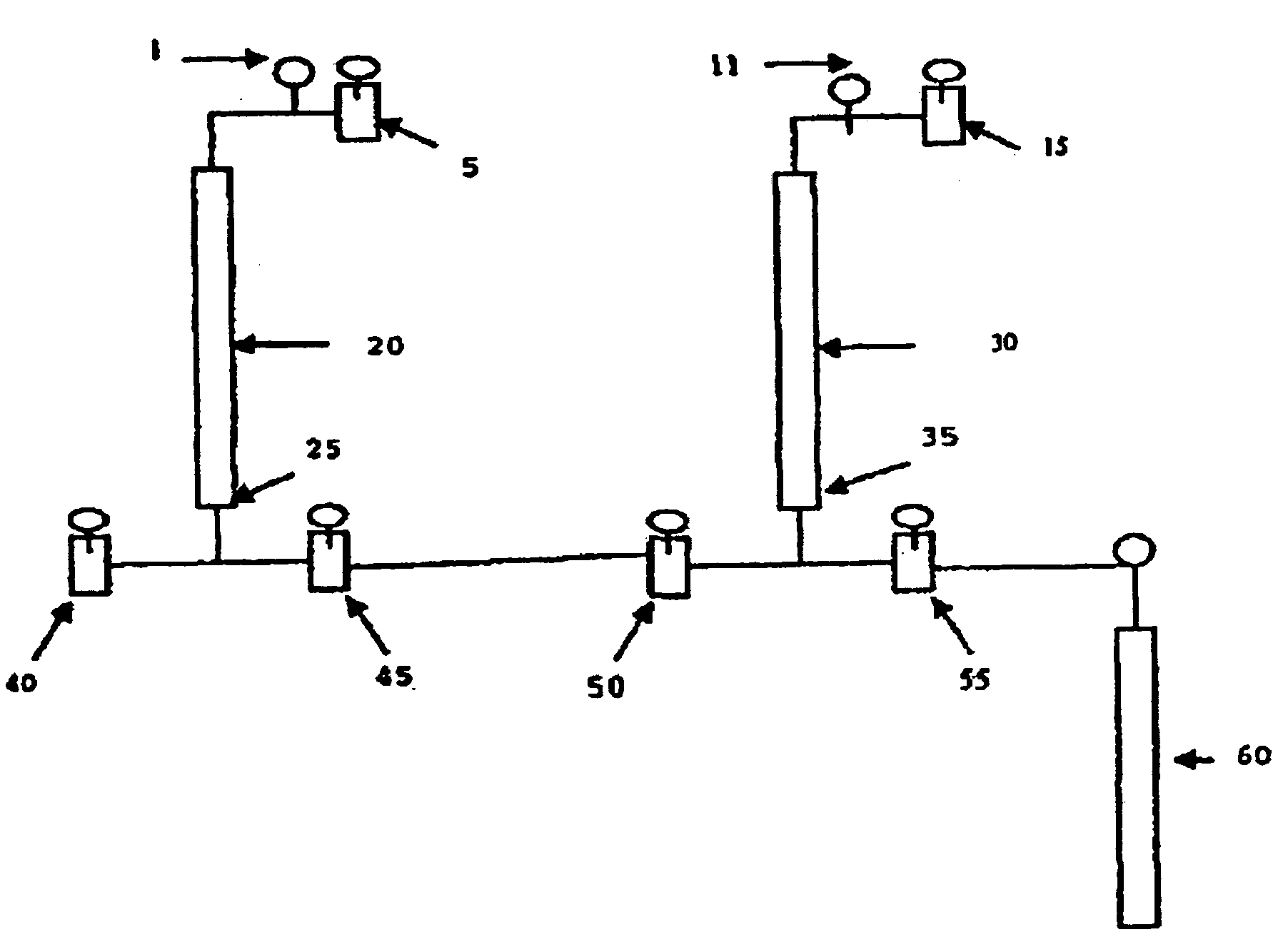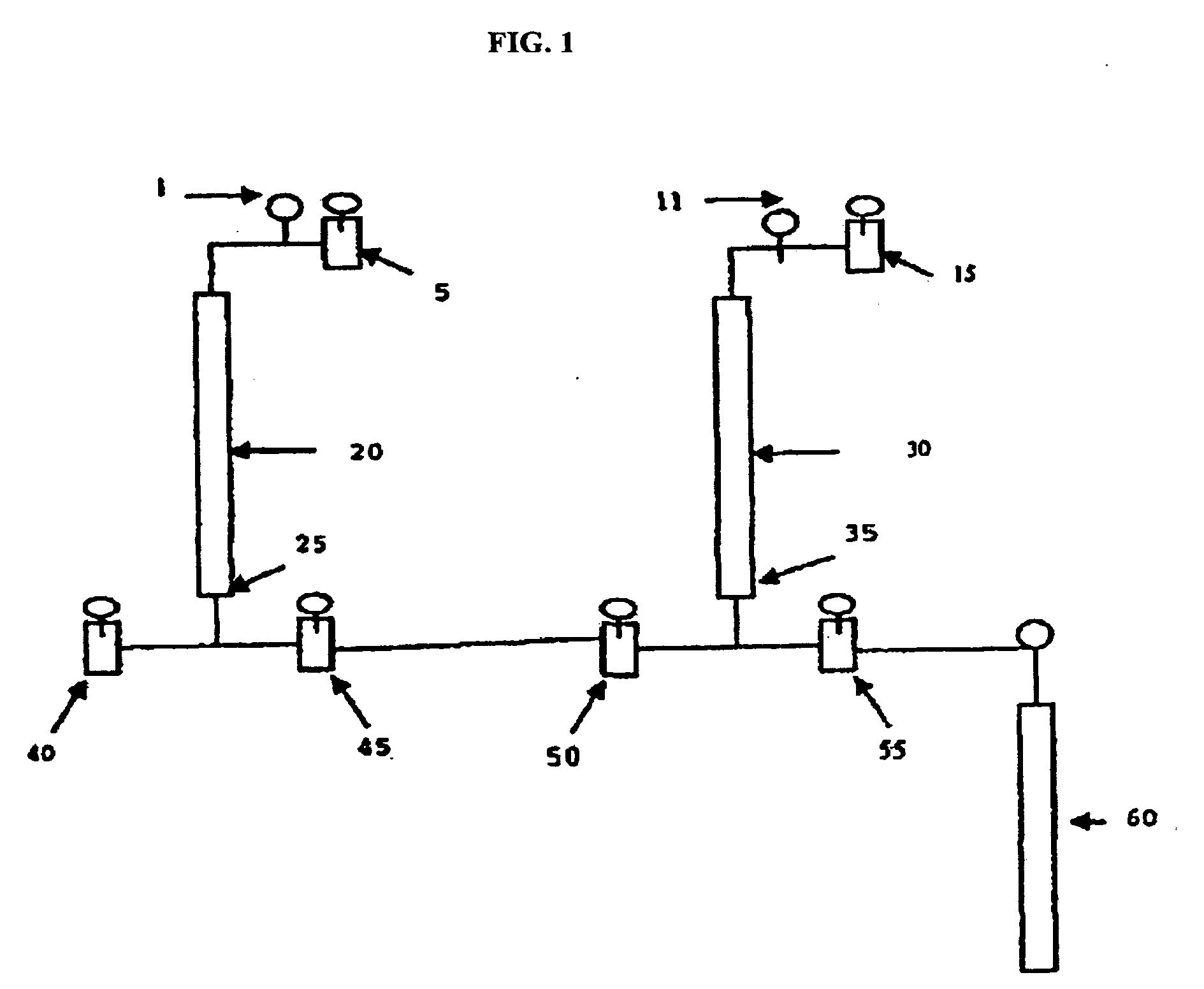Pressurizing -Depressurizing Cycles for Removal of Contaminants in Environmental Samples
a technology of decontamination cycle and environmental sample, which is applied in the direction of cleaning with liquids, separation processes, radioactive contaminants, etc., to achieve the effects of enhancing decontamination efficiency, enhancing solid particle degradation, and increasing the exposure of contaminants
- Summary
- Abstract
- Description
- Claims
- Application Information
AI Technical Summary
Benefits of technology
Problems solved by technology
Method used
Image
Examples
example 1
Treatment for Chemical and Biological Contaminants
[0055]Chemicals to be tested are selected from EPA's CCL among which are also suspected endocrine disruptor compounds. Selected compounds tentatively include chlorinated aliphatic (1,1-dichloroehane), pesticide intermediate (DDE), chlorinated aromatics (2,4,6-trichlorophenol), oxygen fuel additive (MTBE), heterocyclic explosive (RDX), and S, P-containing compound (disulfoton). Many chemicals on this list are already known to be degradable by ozone.
[0056]Coliform, Cyanobacteria and Pseudomonas aeruginosa can be used as model organisms to test disinfection efficiency. Cyanobacteria appears in EPA's 2nd Drinking Water Contaminant Candidate list and pseudomonas aeruginosa is another opportunist pathogen of concern.
[0057]Chemical degradation and disinfection experiments can be carried out in a pressurizable reactor under varying conditions that includes pressure (50-200 psi), temperature (5-35° C.), contact time (5-45 min), ozone in air c...
example 2
Treatment for Chemical and Biological Contaminants
[0058]The following Tables disclose experimental results obtained with processes disclosed and / or claimed herein. Specifically, a heightened ozonation technique (HOT) (i.e., ozonation was applied in pressurizing and depressurizing cycles) was applied to study standardized samples. An illustration of the results is presented in Table 1. As can be seen, all contaminants were degraded by 99.9%.
TABLE 1HOT treatment results of, water spikedwith benzene, bromobenzeneContaminantSpiked concentration (ppm)Degradation (%)Benzene1.8>99.9Bromobenzene3.8>99.9Dichlorophenol3.9>99.9Note:Total initial contaminant moles to 03 ratio = 1:10; HOT treatment was performed by 3 pressurizing-depressurizing repetitions (pressurizing took only 30 sec; slow depressurizing took 10 min; total ozonation time
[0059]Further experiments have shown promise in field applications, as is presented in Tables 2-4.
TABLE 2Pressurizing-depressurizing ozonation treatment ofth...
example 3
Treatment of Wastewater for Bacterial Elimination
[0060]Pressurized ozonation of a wastewater effluent using a modified pressure-filtration unit showed a 99.2% kill of Coliform bacteria with 3 repetitions of pressurizing and depressurizing under the same conditions as in Table 1.
PUM
| Property | Measurement | Unit |
|---|---|---|
| pressure | aaaaa | aaaaa |
| pressure | aaaaa | aaaaa |
| pressure | aaaaa | aaaaa |
Abstract
Description
Claims
Application Information
 Login to View More
Login to View More - R&D
- Intellectual Property
- Life Sciences
- Materials
- Tech Scout
- Unparalleled Data Quality
- Higher Quality Content
- 60% Fewer Hallucinations
Browse by: Latest US Patents, China's latest patents, Technical Efficacy Thesaurus, Application Domain, Technology Topic, Popular Technical Reports.
© 2025 PatSnap. All rights reserved.Legal|Privacy policy|Modern Slavery Act Transparency Statement|Sitemap|About US| Contact US: help@patsnap.com


